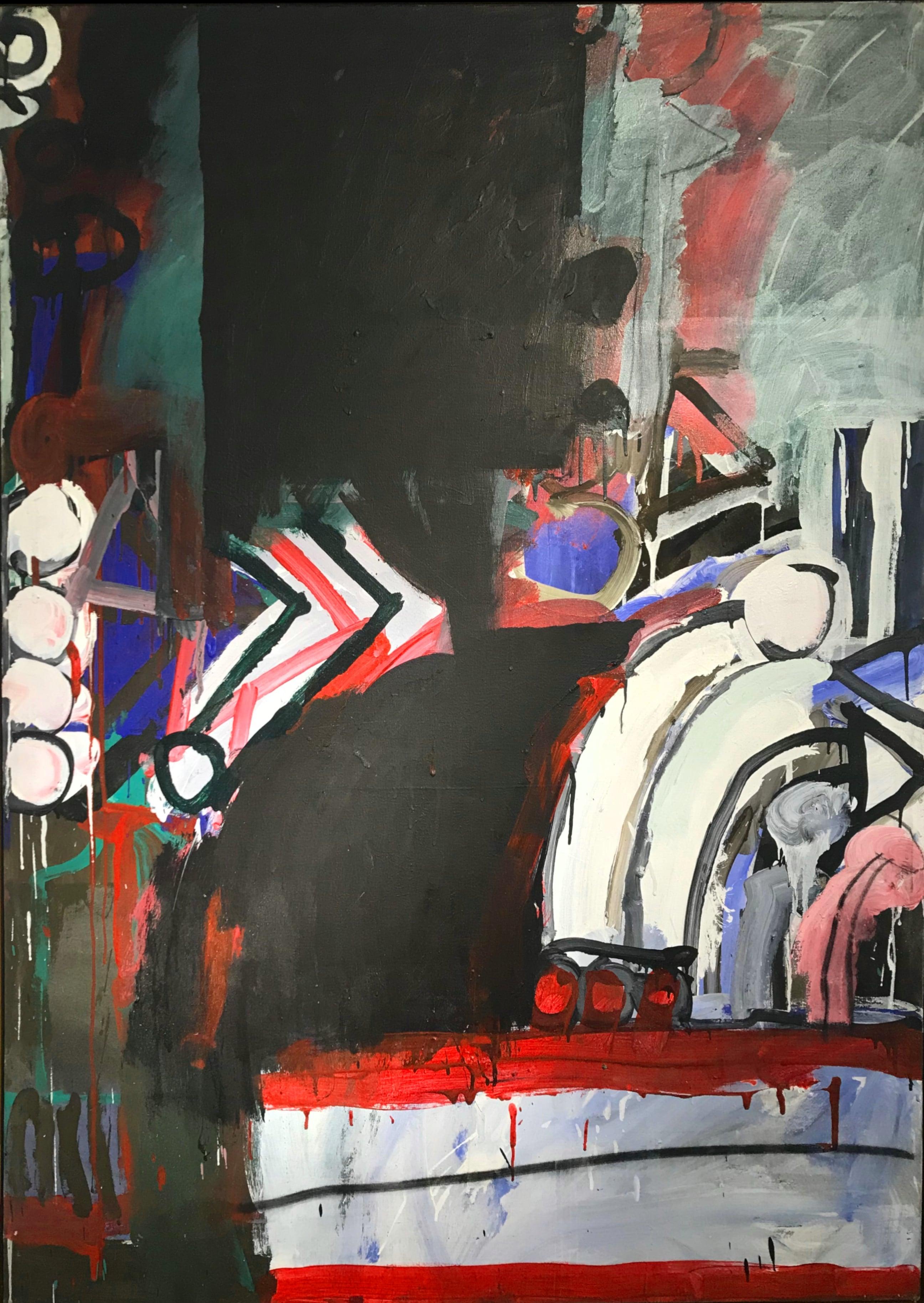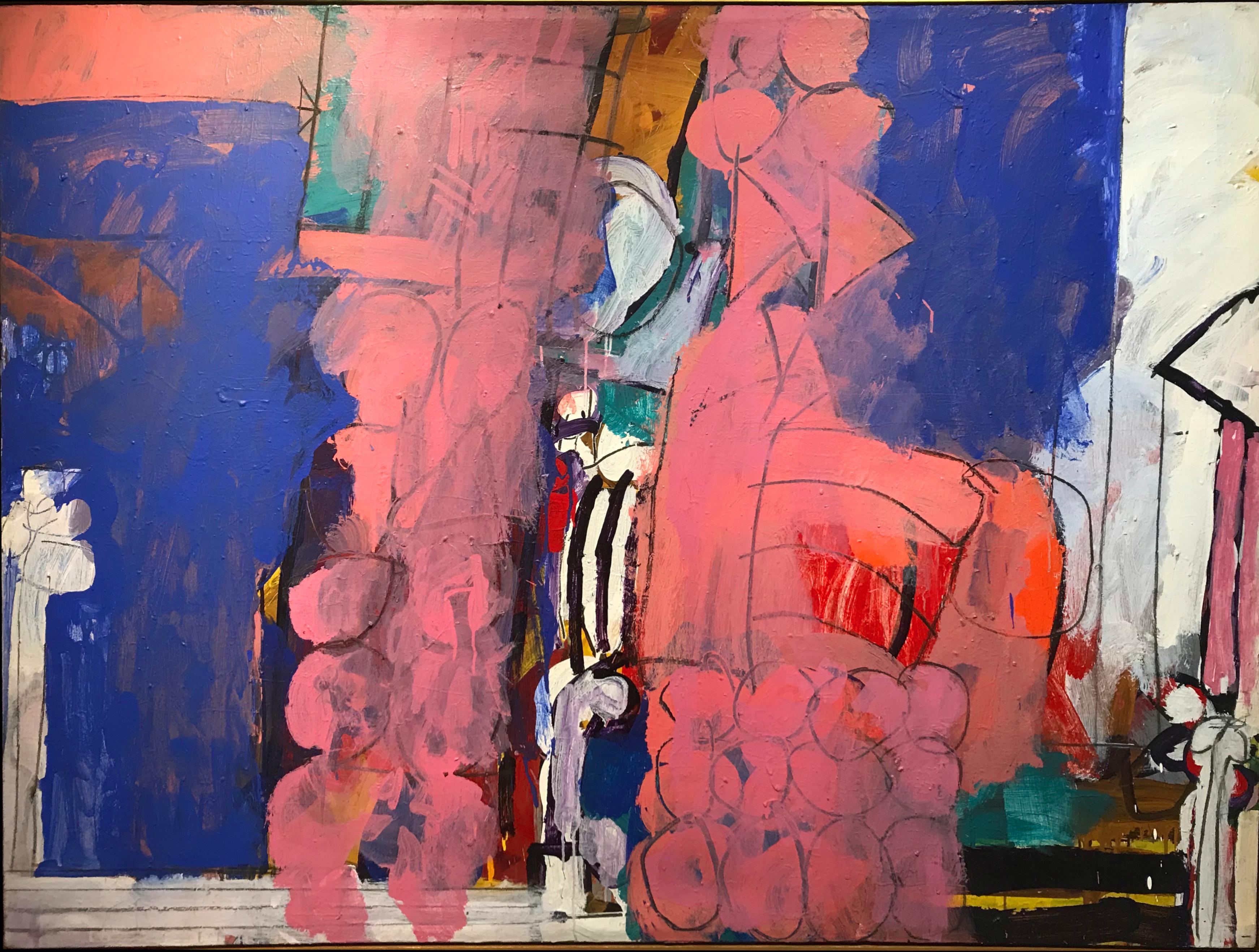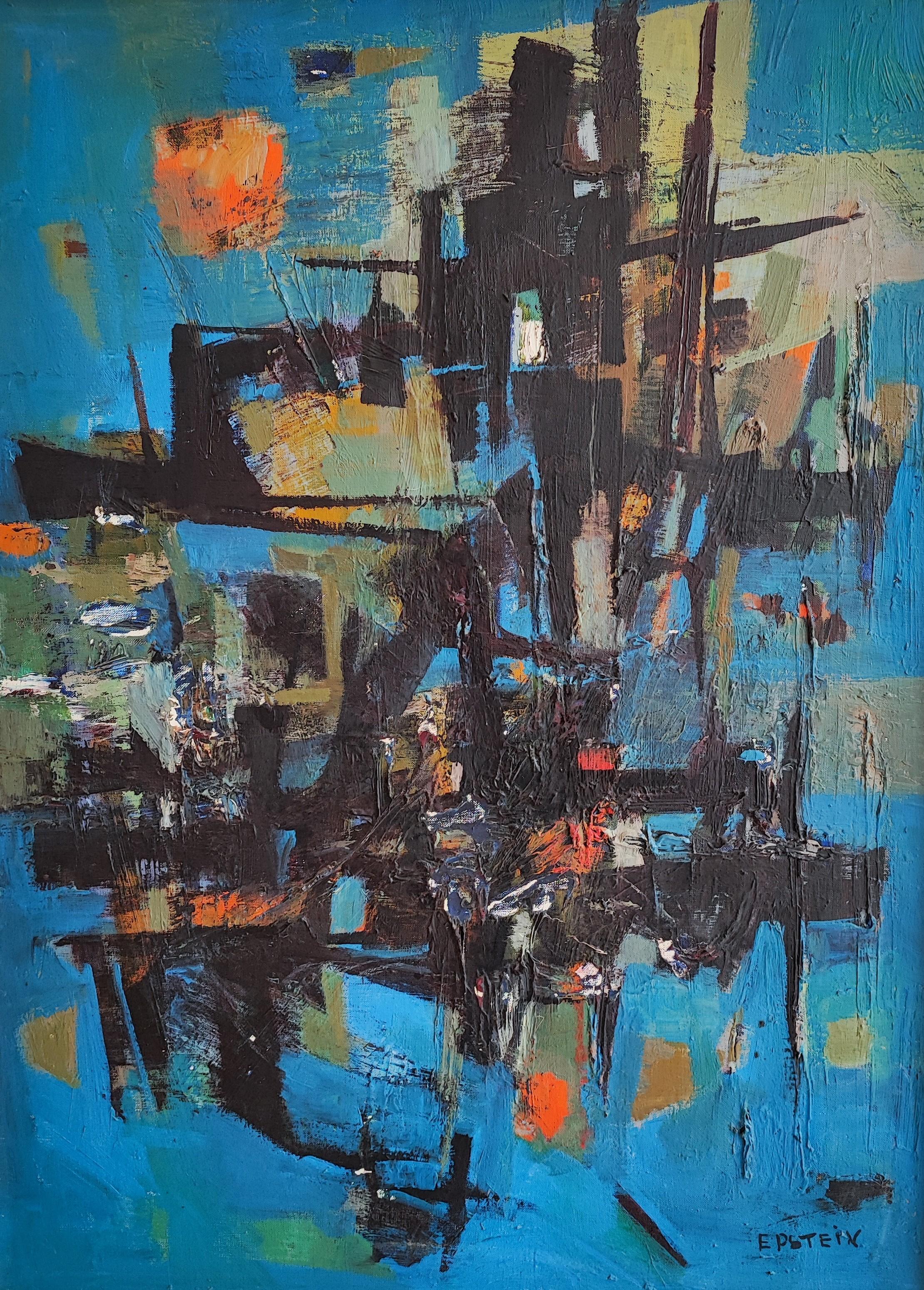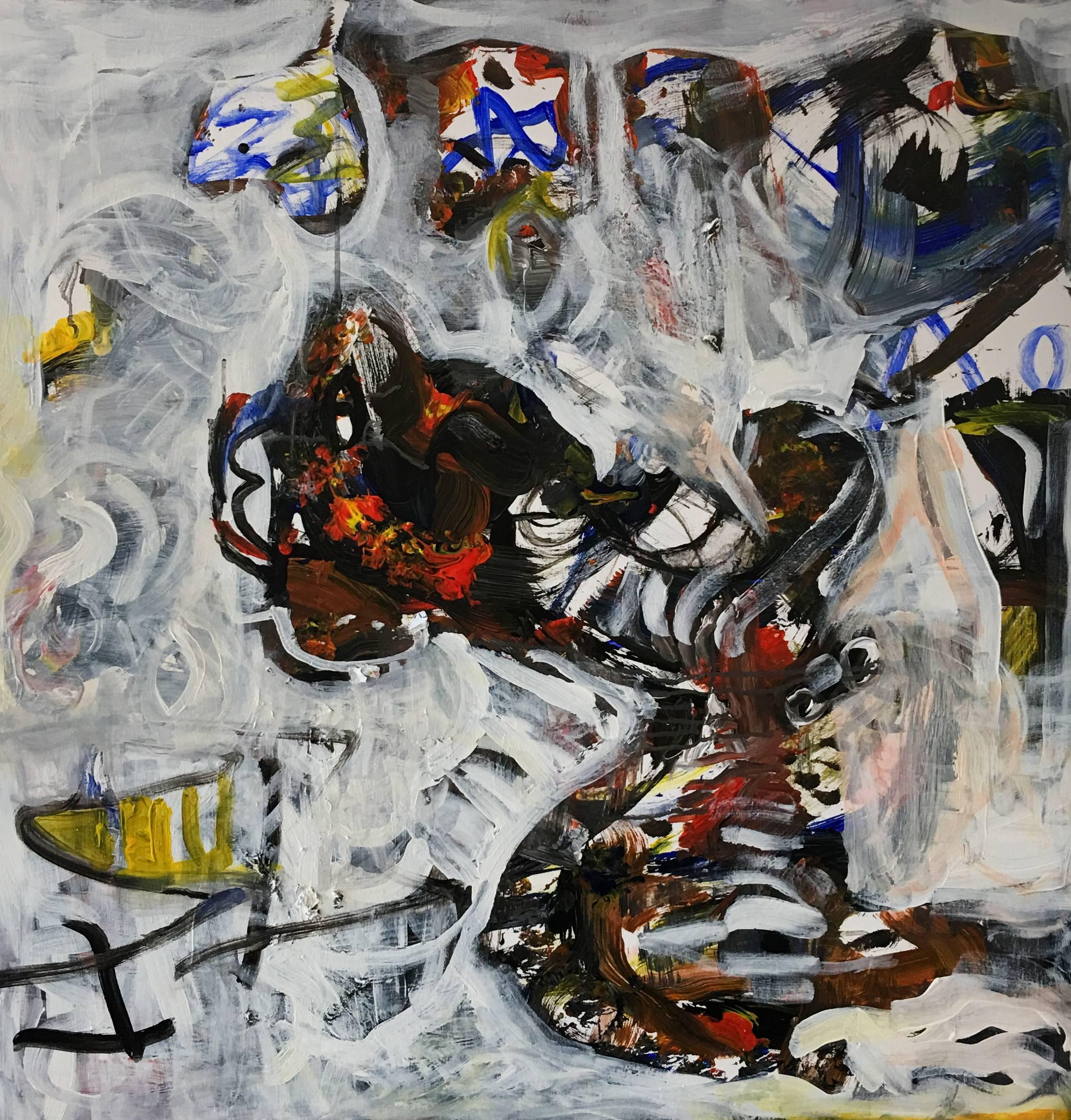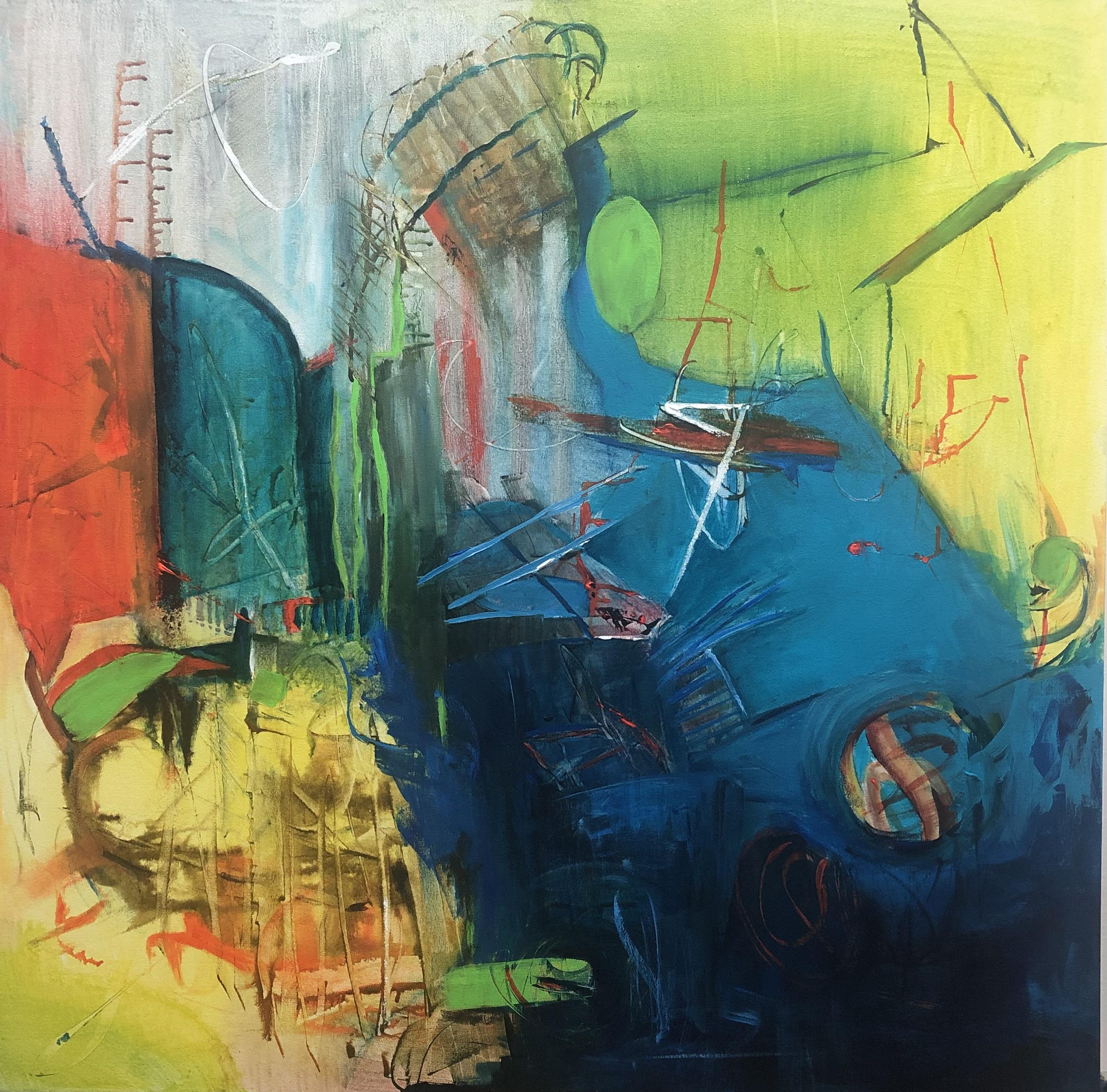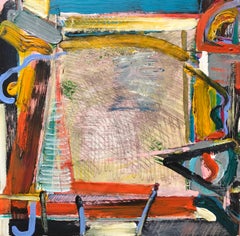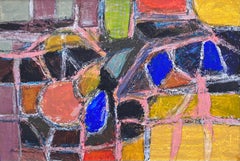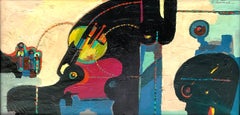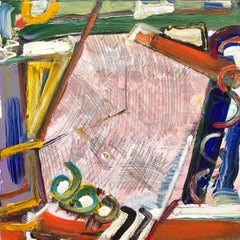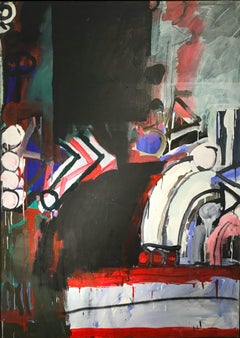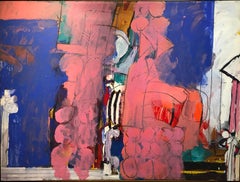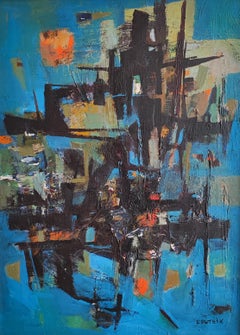Want more images or videos?
Request additional images or videos from the seller
1 of 9
Clayton Mitropoulos"Untitled"20005
20005
$3,600
£2,802.77
€3,187.21
CA$5,175.78
A$5,684.01
CHF 2,968.29
MX$67,840.97
NOK 37,605.45
SEK 35,049.76
DKK 23,804.29
About the Item
This abstract oil on canvas painting was done in 2005 and was exhibited at RVS Fine Art the same year. In good condition and housed in a contemporary gold gilt frame. Overall size 25.25 x 31.25 inches.
The artist has also exhibited his work at the Parrish Art Museum in 1998 and 1999.
- Creator:Clayton Mitropoulos (1953, American)
- Creation Year:20005
- Dimensions:Height: 24 in (60.96 cm)Width: 30 in (76.2 cm)Depth: 1 in (2.54 cm)
- Medium:
- Movement & Style:
- Period:
- Condition:
- Gallery Location:Southampton, NY
- Reference Number:1stDibs: LU141422662
About the Seller
5.0
Platinum Seller
Premium sellers with a 4.7+ rating and 24-hour response times
Established in 1977
1stDibs seller since 2013
552 sales on 1stDibs
Typical response time: <1 hour
- ShippingRetrieving quote...Shipping from: Southampton, NY
- Return Policy
More From This Seller
View All“Untitled”
By Iliyan Ivanov
Located in Southampton, NY
Original acrylic on fiberboard painting by the Bulgarian/American artist, Iliyan Ivanov. Signed, and dated verso, 2012. Untitled. This painting is part of the “Memories of Unfinis...
Category
2010s Abstract Expressionist Abstract Paintings
Materials
Acrylic, Fiberboard
$1,480 Sale Price
20% Off
“Untitled Abstract”
By Martin Rosenthal
Located in Southampton, NY
Original abstract oil painting on heavy card stock by the American artist Martin Rosenthal. Signed lower left and dated 1960. Condition is very good. Slight bow to board. Nicely pro...
Category
1960s Abstract Expressionist Abstract Paintings
Materials
Oil, Board
$2,080 Sale Price
20% Off
“Untitled Abstract”
Located in Southampton, NY
Original oil on canvas abstract painting by the Czech/German artist, Walter Blumel. Signed upper right by the artist and verso as well. Condition is very good. Circa 1965. Overall ...
Category
1960s Abstract Expressionist Abstract Paintings
Materials
Canvas, Oil
“Untitled”
By Iliyan Ivanov
Located in Southampton, NY
Original acrylic on fiberboard painting by the Bulgarian/American artist, Iliyan Ivanov. Signed, and dated verso, 2012. Untitled. This painting is part of the “Memories of Unfinis...
Category
2010s Abstract Expressionist Abstract Paintings
Materials
Acrylic, Fiberboard
$1,480 Sale Price
20% Off
“Untitled”
By John Little
Located in Southampton, NY
Early, original oil on canvas painting by the well known American abstract expressionist artist, John Little. Signed and dated lower right, 1958.
Signed and dated verso. Rose Fried...
Category
1950s Abstract Expressionist Abstract Paintings
Materials
Canvas, Oil
$14,000
“Untitled Abstract”
By Nahum Tschacbasov
Located in Southampton, NY
Original mid-century modern abstract oil on canvas painting by the well known Russian/American artist Nahum Tschacbasov. Signed lower right and dated 1945. Condition is very good. P...
Category
1940s Abstract Expressionist Abstract Paintings
Materials
Canvas, Oil
You May Also Like
Untitled
Located in New York, NY
This work conveys a sense of mystery and excitement carefully contained. Deep black in the middle draws the viewer in, provoking one to slowly expand their view out to the edges of t...
Category
Late 20th Century Abstract Expressionist Abstract Paintings
Materials
Canvas, Acrylic
The Untitled One
Located in New York, NY
Stefanelli’s extensive travels throughout Europe and his keen interest in ancient culture and architecture influenced this work and were the impetus for him to create "The Untitled One". Throughout the canvas one can see shapes reminiscent of antique columns painted in white to resemble marble. One such shape is placed at the very edge of the painting, to the left, standing on top of the marble steps...
Category
1980s Abstract Expressionist Abstract Paintings
Materials
Canvas, Acrylic
Composicion #23
Located in Milford, NH
A fine Mid Century vertical abstract expressionist oil painting by Panamanian artist Antonio Alvarado (b. 1938). Antonio studied under the figurative ...
Category
1960s Abstract Expressionist Abstract Paintings
Materials
Canvas, Oil
Abstract composition
Located in Genève, GE
Work on canvas
Beige frame
Dimensions with frame : 92 x 71 x 2.5 cm
This abstract work immediately captures attention with its bold interplay of colors and shapes. The vivid blue ba...
Category
Mid-20th Century Abstract Abstract Paintings
Materials
Canvas, Oil
Untitled Abstract Painting on Canvas by Fern Samuels
By Fern Samuels
Located in West Palm Beach, FL
Fern Samuels received her Bachelor of Fine Arts degree from Loyola University in Chicago, Illinois, and her Master of Fine Arts from the School of the Art institute of Chicago. She r...
Category
21st Century and Contemporary Abstract Expressionist Abstract Paintings
Materials
Acrylic
Open Space
Located in Baton Rouge, LA
I intuitively paint each of my paintings based on my mood of the day or at that moment. I never know what I am going to create until I see the end result. Sometimes it is a colorful,...
Category
2010s Abstract Expressionist Abstract Paintings
Materials
Canvas, Acrylic
$2,040 Sale Price
20% Off
